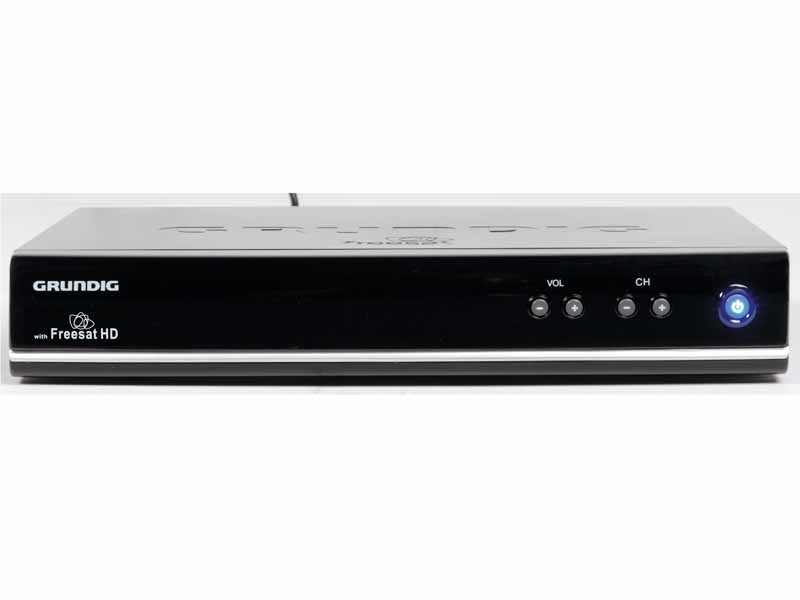Is satellite TV picture quality up to scratch?
Satellite delivery not always a guarantee of best picture quality

Satellite broadcasting has revolutionised UK television.
By providing an ever-growing choice of channels capable of fulfilling practically every whim, the technology has set a standard that rival broadcast platforms have struggled to compete against. But as we reveal here, satellite delivery is not always a guarantee of best-in-class picture quality.
Historically, satellite, and Sky in particular has often been at the forefront of key AV developments in the UK. By opting for old-tech PAL over then rival MAC, Sky got its service up and running with inexpensive receiving systems. Yet it was also the first broadcaster to champion HDTV.
Sky's 20-year reign as the nation's first-and-foremost satellite TV provider has seldom been anything other than groundbreaking from a technical standpoint: it pioneered interactive services like home-shopping and made Pay-Per-View a real alternative to movie rentals, as well as providing expanded coverage of major sporting events.
But for home cinema addicts, the real value of Sky Digital was in its widescreen potential and improved AV quality. The horrendous 'mush' and soft pictures of the original analogue service's VideoCrypt scrambling system, so noticeable on the bigger screens that were becoming popular with AV enthusiasts, were replaced by sparklie-free clarity – especially if you were using RGB Scart – while the digital service's sound quality stood head and shoulders above the old companded FM system.
But, ten years on, just what is the state of satellite TV in the UK? Specifically, how does the picture quality available from Sky and its newer rival Freesat compare to terrestrial digital TV service Freeview?
Like Freeview, Freesat is a no-subscription alternative to Sky, albeit one which offers a mix of hi-def and standarddef channels. It takes advantage of the same transmissions as Sky, allowing viewers to interchange Sky and Freesat equipment using the same dish.
Sign up for breaking news, reviews, opinion, top tech deals, and more.
So, broadcasters now have two high-profile platforms to court viewers, and both service providers offer a high-definition channel selection. But has the drive to expand viewing choice compromised the quality of standard-definition channels?
Even on satellite, spectrum is a finite resource and so something has to give if more services are to be accommodated. By shaving down bitrates, each of the satellite transponders can accommodate more channels – including the multiplicity of home-shopping channels, dating/chat/astrology services and those '+1' time-delays.
On the other hand, can improvements in encoding technology help maintain satellite's image quality?
Channel discrepancies
In the beginning, popular Sky services like Sky One specified a resolution known in broadcast circles as 'cropped-D1' (704 x 576i), which is close to DVD's full-D1 res of 720 x 576i.
Clarity was generally excellent. But a couple of years ago I noticed that frequently-repeated and thus familiar Sky One programmes like The Simpsons and Al Murray-vehicle Time Gentlemen Please seemed to have taken on a 'softer' appearance when viewed on my largescreen TV. It transpired that this channel had moved to sub-sampled D1 (544 x 576i); and the lower horizontal resolution was having an inevitable impact on visible detail.
Also using this resolution are other popular channels, including Paramount and UKTV Gold. But some are even worse. If you enjoy the documentaries that form the mainstay of Discovery (sharks and Nazis, generally), you may be surprised to learn that the channel is broadcast with a resolution of just 528 x 576i. I'd argue that such resolutions are barely acceptable for 4:3 material, but they're often used for anamorphically-squeezed widescreen fare – including the movies that subscribers often pay a premium for.
What's more, some satellite broadcasters using the Sky and Freesat platforms have been slow to adopt widescreen playout hardware, and insist on broadcasting selected 16:9 programmes in 4:3 'letterbox' format, as opposed to carrying them in anamorphic widescreen. Virgin famously did this with The Sarah Connor Chronicles, while Sci-Fi made a 4:3 hash of Season One of Heroes.